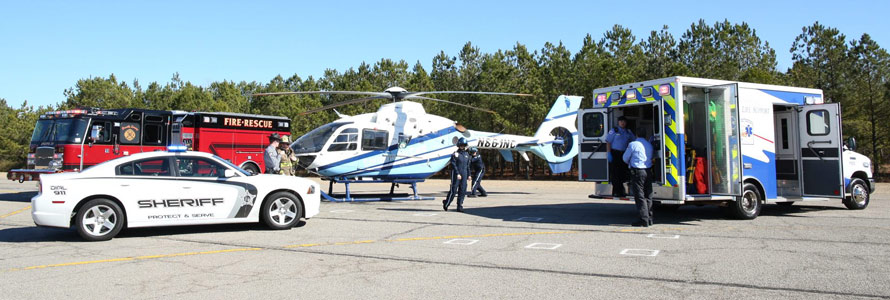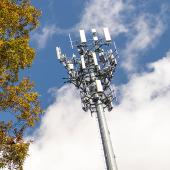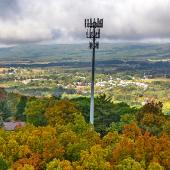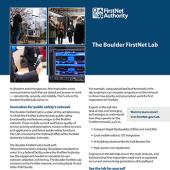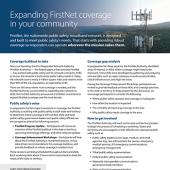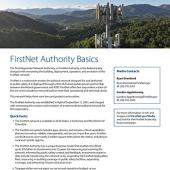Maine is undertaking a statewide project to install FirstNet in all its ambulances — to keep them connected and communicating wherever the call takes them. Integrating FirstNet into ambulances improves pre-hospital care and safety for patients, responders, vehicles, and roads.
A vision for better EMS communications
Connected ambulances have a plethora of benefits for EMS. “The idea behind this is increasing EMS capabilities to communicate,” said the former Maine EMS director who oversaw the kickoff of the Maine EMS Connectivity Project to install FirstNet in ambulances.
FirstNet is built for public safety operations. This means that Maine’s ambulances and other FirstNet subscribers benefit from priority and preemption, making them the first and most important users on the network. Coverage is also important. The state’s public safety community helped identify areas for expanded FirstNet coverage, especially in rural and remote areas.
“We did some evaluation within the state and worked with a number of carriers to determine that FirstNet has really, truly developed the best overall network,” said Jim Carman, who is leading the installation team from NEWCOM, Maine’s statewide contractor for the project.
Communicating with the hospital
As part of the project, every licensed EMS vehicle in the state has the opportunity to be outfitted with high-speed Internet using a rugged vehicle router with Wi-Fi; a high-gain, roof-mounted antenna; and two paid years of FirstNet’s reliable, secure broadband service.
Connected ambulances allow better communication between EMS and the hospital. One agency reported that their clinicians had trouble when using personal phones to call the hospital from inside the patient compartment. Installing FirstNet in the ambulance solves that.
“The FirstNet service, a Cradlepoint router, and high-gain antenna create the ultimate environment to be able to grab and disperse a signal,” said Jim Carman.
Improved patient care
The connected ambulance makes it easier for EMS clinicians to deliver faster, improved patient care. With FirstNet, they can author patient care reports and immediately submit them, without having to return to the station to upload.
Maine EMS clinicians can also access patient care information from the back of the ambulance. In the near future, they will also be able to look up individual health records to see a patient’s allergies, medications, and diagnoses. This is especially important if the patient is unconscious or is otherwise unable to communicate.
FirstNet provides the quality of service, priority, and preemption to transport this data reliably and securely.
Rural communities helped by telemedicine
Maine is mostly rural. The state is known for its natural beauty and rugged landscape. These same conditions present challenges in delivering emergency care.
Telemedicine is a way for rural communities to easily access physicians and specialists located hours away. FirstNet has unique capabilities to support telemedicine because of the reliability, speed, and security of the network. The Maine EMS Connectivity Project allows telemedicine sessions to be conducted in or near the ambulance with FirstNet.
Another useful piece of technology for rural EMS is FirstNet’s high-power user equipment, or HPUE. HPUE gives public safety devices increased power to stay connected to the network when traditional devices might slow or drop off. FirstNet’s Band 14 is the only spectrum band in the United States operating with HPUE.
Real-time resource management
Beyond improved patient care and communication with the hospital, equipping ambulances with FirstNet allows for better resource management.
Ambulance GPS can integrate with an agency’s computer-aided dispatch, or CAD, to show its real-time location. Having full visibility for all EMS vehicles improves management of the fleet and enables greater efficiencies in dispatch.
If EMS clinicians are carrying FirstNet devices, their location can be tracked on calls that take them away from the ambulance. This helps promote safety for responders.
Roadway safety
Connectivity in the ambulance helps create safer conditions for responders who are working on roads, for the patients being treated, and for motorists approaching them.
In addition to installing FirstNet, the Maine EMS Connectivity Project also offers the installation of an alert system to improve roadway safety. When an ambulance’s lights and sirens are activated, the alert system connects to apps like Waze and Apple Maps to notify drivers that an emergency vehicle is ahead. Soon those same alerts will be sent to nearby roadway messaging signs. The alert system is powered by FirstNet’s connectivity.
Grant-funded connectivity
Maine is funding this program through a grant from the U.S. Department of Transportation’s Bureau of Highway Safety.
Participation is voluntary, and each agency must opt-in to participate. As of February 2024, NEWCOM has installed 156 EMS vehicles for 49 agencies out of a total of 550 vehicles across 308 agencies.
Each agency has flexibility in choosing what service and technology to install. NEWCOM’s contract with Maine allows for variation based on the desired level of connectivity.
The state is pursuing funding to continue to subsidize FirstNet services after the initial two-year period.
To learn more about how FirstNet is helping public safety and the EMS community to leverage innovative public safety communications, sign up for the EMS Take with Jon Olson.









